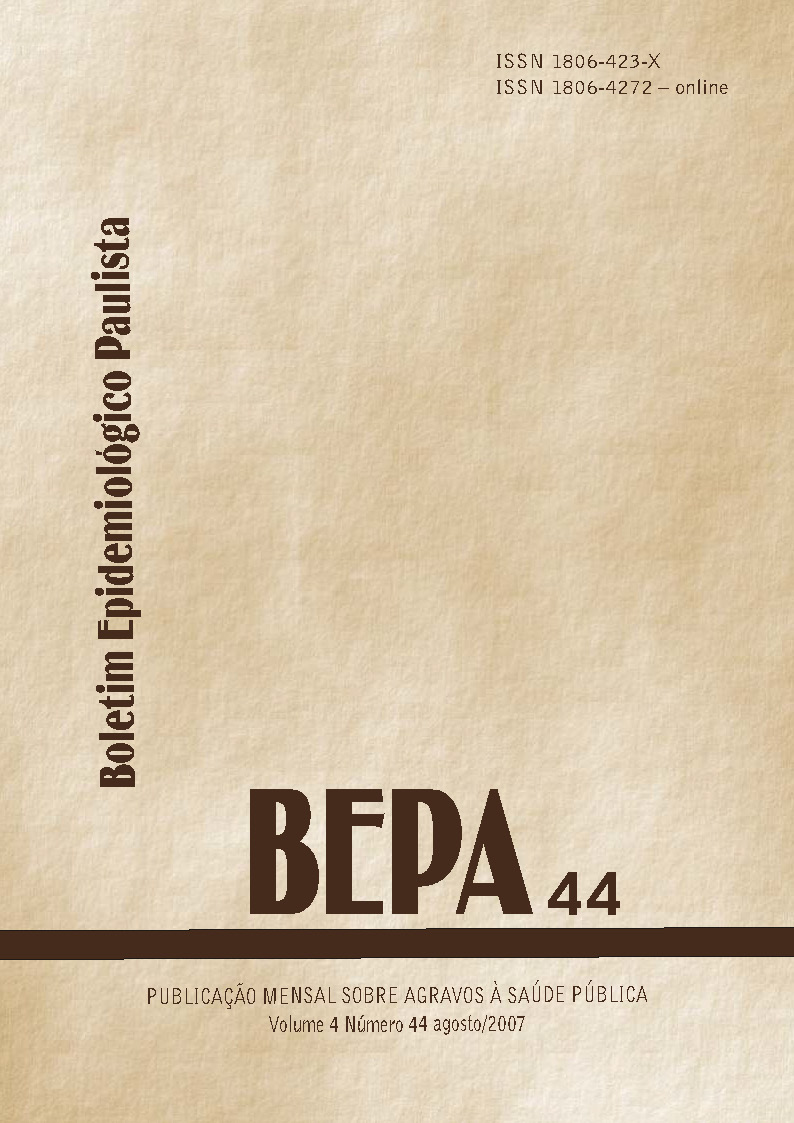Abstract
Leprosy is an inflammatory, chronic, granulomatous disease caused by Mycobacterium leprae. Still endemic in some developing countries, the major clinical signs are hypoesthesic skin lesions and enlargement of peripheral nerves. More compromised areas in the buccal cavity more compromises are the hard and soft palate, uvula, lips, tongue and gum. Periodontal disease includes inflammatory condition of chronic characteristics with bacterial origin, which starts affecting gingival tissue leading to the loss of supportive tissue of the dental elements. The present study aims to investigate the prevalence and characteristics of periodontal disease inleprosy cases. In this regard, 100 cases from the Instituto Lauro de Sousa Lima were examined for periodontal probing, level of clinical insertion, bacterial plaque index, presence of bleeding at probing, dental mobility and periapical radiography as a complementary method of examination. Statistical analysis indicate that, similar to the general population, periodontal disease relevant prevalence in adult and elderly cases of Hansen’s disease, as well as in patients who smoked, and that there was no evidence that leprosy could be determinant for the occurrence of periodontal disease.
References
AAPHD. American Association of Public Health Dentistry. http://www.aaphd.org/docs/whydentalpublichealth2.pdf/. Acesso em: 20 de dezembro de 2006.
WHO. World Health Organization. Policy basis. www.who.int/oral_health/policy/en. Acesso em: 20 de dezembro de 2006.
OMS. Organização Mundial da Saúde. Levantamentos básicos em saúde bucal. 4. ed. São Paulo: Santos, 1999. 66 p.
Aarestrup FM, Aquino MA, Castro JM et al. Doença periodontal em hansenianos. Rev. Periodontia 1995; 4: 191-193.
Bechelli LM, Berti A. Lesões lepróticas da mucosa bucal: estudo clínico. Rev. Bras. Leprol. 1939; 7: 187-199.
Kumar B, Yande R, Kaur I et al. Involvement of palate and cheek in leprosy. Indian J. Leprosy. 1988; 60: 280-284.
Sharma VK, Kaur S, Radotra BD et al. Tongue involvement in lepromatous leprosy. Int. J. Dermatol. 1993; 32: 27-29.
Neville BW, Damm DD, Allen CM et al. Infecções bacterianas – Lepra. In: Patologia oral & maxilofacial. Rio de Janeiro: Guanabara, 1998, pp. 148-150.
Scheepers A, Lemmer J. Erythema nodosum: A possible cause of oral destruction in leprosy. Int. J. Lepr. 1992; 60: 641-643.
Brasil J, Opromolla DVA, Freitas JAS et al. Estudo histológico e baciloscópico de lesões lepróticas da mucosa bucal. Rev. Estomat. Cult. 1973; 7: 113-119.
Mital BN. The national leprosy eradication programme in India. Rapp. Trimest Statisc. Sanit. Nond. 1991; 44: 23-29.
Pinto VG. Saúde Bucal Coletiva. 4a Ed. Livraria Editora Santos, 2000.
Ronderos M, Pihltrom BL, Hodges JS. Periodontal disease among indigenous people in the Amazon rain forest. J. Clin. Periodont., v.28, n.11, p.995-1003, Nov. 2001.
Lindhe, J. Tratado de Periodontia Clínica e Implantologia Oral. 3ª ed, editora Guanabara Koogan, 1999.
Marshak-Day CD, Stevens RG, Quiley LF Jr. Periodontol Disease Prevalence and Incidence. J Periodontol 1955; 26: 185-203.
Abdellatif HM, Burt BA. An Epidemiological Investigation in to the Relative Importance of Age and Oral Hygiene Status as Determinants of Period ontitis. J Dent Res 1987; 66: 13-18.
Grossi SG, Genco RJ, Machtei EE. et al.. Assessment of Risk for Periodontal Disease. II. Risk Indicators for Alveolar Bone Loss. J Periodontol; 66: 23-29;1995.
Grossi SG, Zambon JJ, Ho AW. et al.. Assessment of Risk for Periodontal Disease. I. Risk Indicators for Attachment Loss. J Periodontol 1994; 65: 260-267 – In: ROSE,LE, et al.; Medicina Periodontal; Livraria Editora Santos; 1 Ed.; 2002.
Millar AJ, Brunelli JA, Carlos JP, et al. Oral Health of United States Adults: National Findings. Bethesda, MD: National Institute of Dental Research, 1987. NIH Publication No. 87-2868.

This work is licensed under a Creative Commons Attribution 4.0 International License.
Copyright (c) 2007 Priscila C. R. Belmonte, Marcos C. L. Virmond, Aline S. Tonello, Gustavo C. Belmonte, José Fernando C. Monti
